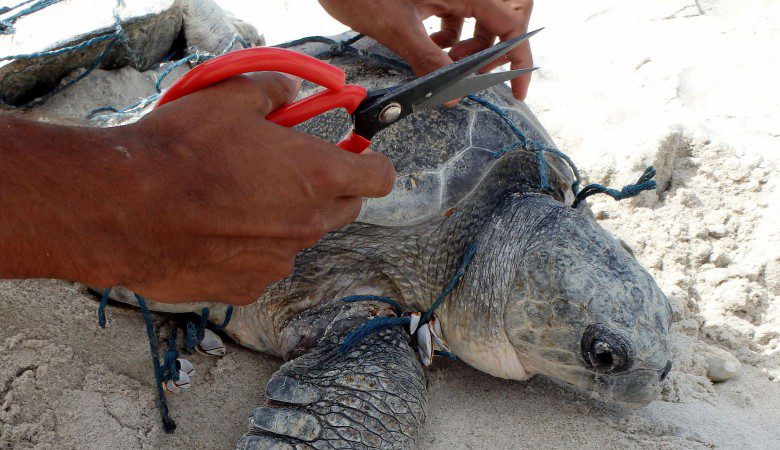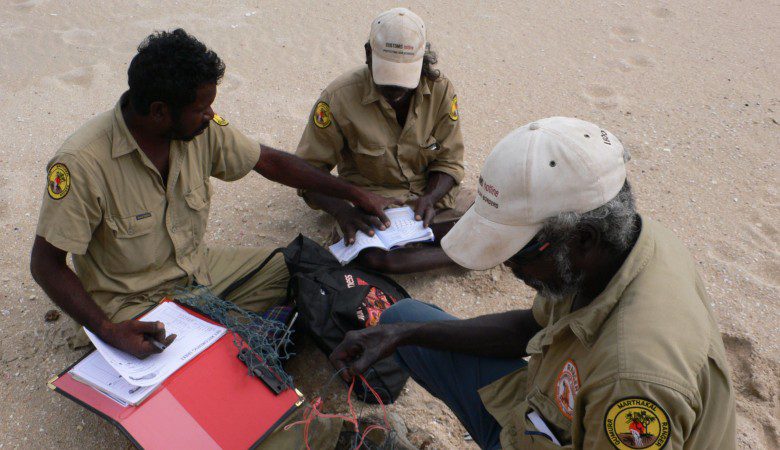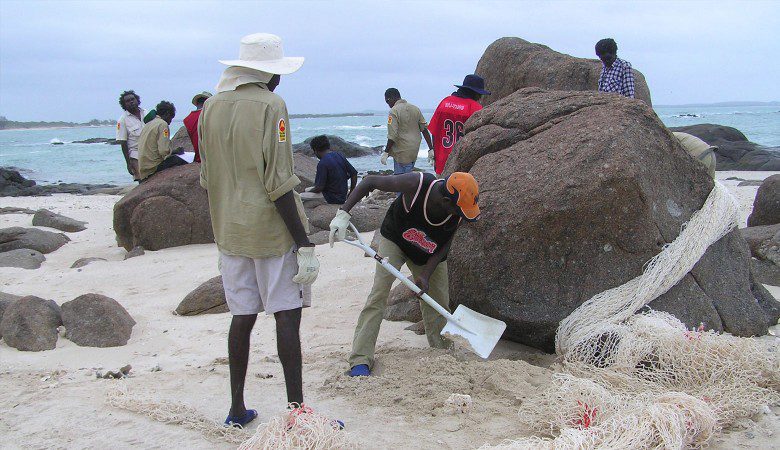Indigenous Rangers
GhostNets Australia has worked to build the capacity of 31 coastal indigenous communities to protect over 3,000 km of saltwater country from ghost nets.
We are immensely proud of the achievements of the Ranger Groups, however it is difficult to quantify them. Whilst rangers have recorded the removal of 13,000 ghost nets, we know that many more have been removed and the lives of many turtles have been saved. Even this doesn’t give an accurate picture of the enormity of the task. Working across a total of 3,000 km of coastline is no small feat, especially when the role requires the removal of nets that vary in size from a football to a Mack truck (6 tonnes or 6 kms long).
We are also proud of the work we have undertaken to build the capacity of these coastal ranger groups to manage the ghost net issues. We’ve done this by supporting them with a ‘fee for service’ arrangement (2004-2013) which has ensured rangers are adequately funded to do this hard yakka. This support has also included supplying much needed resources such as vehicles, net cutters and extra manpower where required and helping them negotiate partnerships with many commercial entities such as mining companies or fishing charters.
Whilst we continue to support the rangers to protect marine life, through the provision of training in data collection, ghost net identification and safe work practice, we have begun to expand our reach beyond our coastline, in a bid to work towards a vision of an ocean free from ghost nets.
Explore the thumbnails below, for stories and profiles of the rangers and their work.

Turtle Rescue, Rehabilitation and Release
The Gulf of Carpentaria has globally significant nesting and foraging grounds for six of the world’s marine turtles.
Unfortunately it is also one of the world’s ‘hot spots’ for ghost nets. This results in many turtles, (80% of wildife found), becoming entangled in the nets and in most cases dying as a consequence. The rangers, during their beach patrols, attempt to rescue and in some cases rehabilitate as many as they can.

Data Collection
We have established a strong culture of data collection to ensure that we are building our knowledge on how to best tackle the issues.
To do this we have worked in strong partnership with the CSIRO (2009-2013) and introduced electronic data collection system to ensure that the data collected by rangers is consistent.
Our data often tells two stories, one is of our achievements, the other illuminates the magnitude of the problem:
For example our data shows how hard rangers are working to protect marine life. Almost 300 turtles have been found entangled in the nets, some of which have been able to be rehabilitated back to health and released back into their habitat. These are devastaing figures for our endangered marine life, even more so beacuse we know that many turles perish and decay before the nets wash ashore.
We have used our data to populate a computer model of the oceanic processes in the Gulf of Carpentaria, helping us to determine the movement and source of the nets, being primarily the Arafura Sea.
With the data we have also been able to identify that over 90 percent of the nets are foreign and that most of these nets appear to originate from trawl fishers in the Arafura Sea.
We’re now pursuing opportunities to stem the flow of these nets and change fishing practices in the Arafura Sea. We look forward to sharing more of our achievements with you in the future.

Cleanups
Ghost nets can vary in size from a football to a Mack truck. So as you can imagine removing the nets from our shores is hard work, often requiring machinery to dig them out of the sand.
The nets that remain at sea can pose an even bigger challenge. Some are too large to move beyond the coastal fringe and require intensive resourcing (including help from fishermen) to lift them from the ocean.
Our ranger groups will often require support to enable them to tackle large nets including manpower, heavy equipment, resourcing and logistics. Some of our major cleanups have only been possible through our strong partnerships, brute force and sheer persistence!